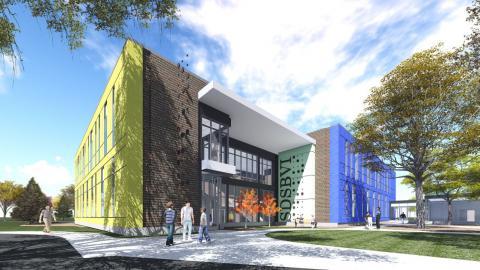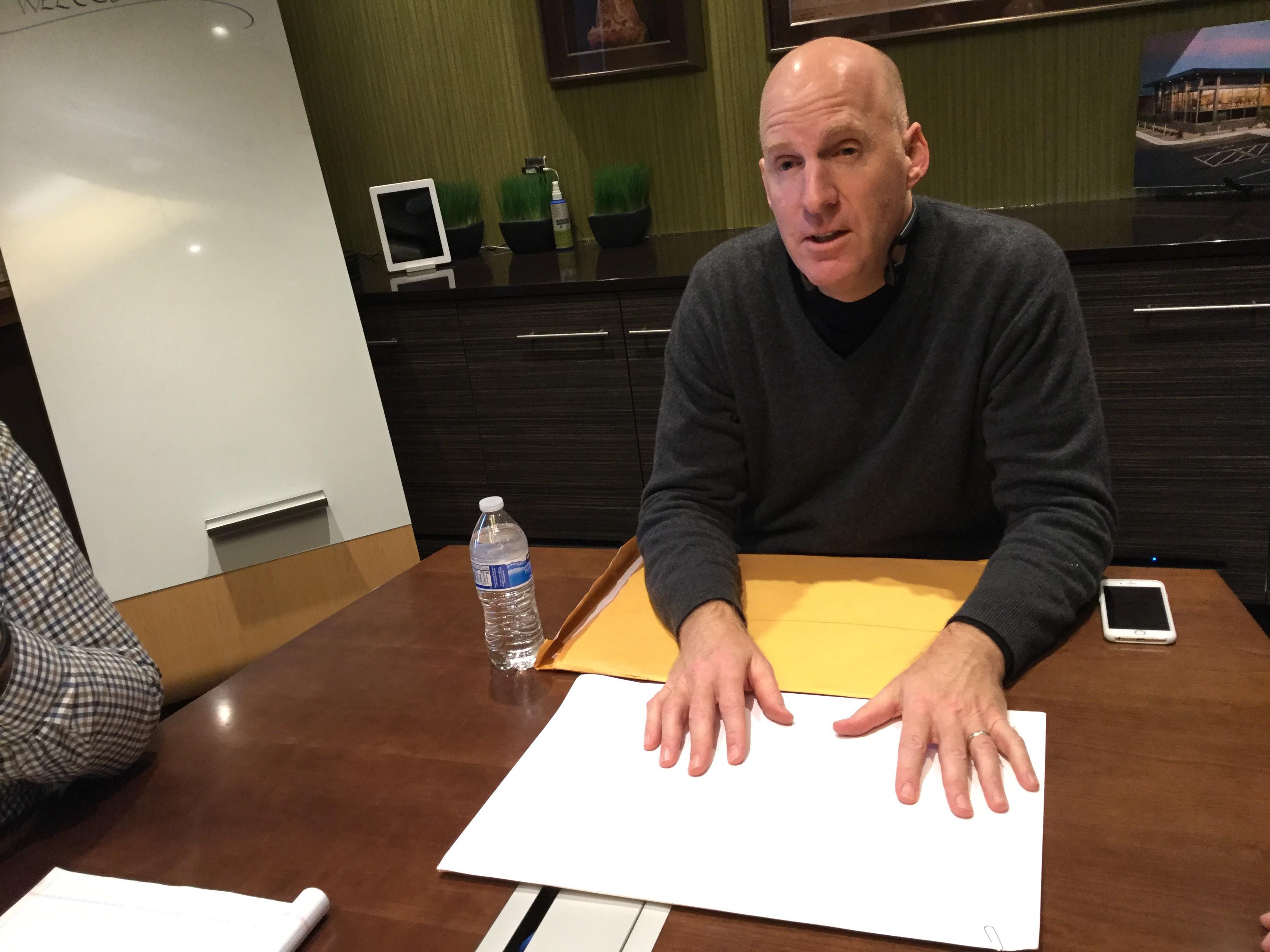
ABERDEEN, S.D. – Christopher Downey can hear the shape of the space in a room.
Downey can find a building’s front doors by the way the feedback of his cane changes – the sound from the tip of the cane hitting the floor’s surface and bouncing back to him.
“You can localize different sounds to realize where it’s coming from,” said Downey, who lost his sight in 2008. “The sound of a recessed entry is very distinctive.”
It’s a skill not many architects have, yet one that has made Downey’s input instrumental in the design of the new South Dakota School for the Blind and Visually Impaired – one of three projects of the Educational Impact Campaign, a collaborative effort between SDSBVI and Northern State University.

Downey did not work as an architect on this project, but rather as a design consultant. The Sioux Falls architectural firm TSP spearheaded this project, with help from Downey and fellow consultant Julie Walliesa, who has experience designing schools for the visually impaired.
Downey said his job was to augment their expertise with knowledge from within his unique perspective.
“Most architects think with their eyes. That’s how they’re trained,” Downey said. “It’s a very visual profession.”
But with Downey’s help, the architects were able to create a multisensory design layout. That included making the front door of the school more recognizable through sound and material changes in the ground plain, so that students can feel the difference with their feet or canes. Using materials and acoustics can help students find the front door in a non-visual way, he said.
New Tools Key to Continuing Work
Downey lost his sight in 2008 as a result of surgery to remove a brain tumor. The tumor was not cancerous, Downey said, and everything about the surgery went well. “I just happened to lose my sight.”
Afterward, it meant Downey needed to learn a new method to continue with his longtime career. But, he said, at the core of architecture is the creative process – it’s a way of thinking.
“In many ways I started to realize it was more about a tool challenge than the whole process,” he said. “Some of the process is different, but really I just needed new tools to be able to work without sight.”
One key new tool was getting a tactile printer to print architectural drawings in tactile form, so that he can read them through touch.
First Time Working on School Project
Though he’s worked on numerous projects for the blind and visually impaired over the last 10 years, this was the first time he worked on a school for the blind and visually impaired.
“It’s exciting for me because blindness is a very hard disability to understand from the outside,” he said, adding, “I walk around on two feet just the way I did before. I have the same degree of dexterity and mobility as before. I just can’t see the world around me.”
But, he said, there are all sorts of other things that will help make sense of the environment around you through other sensory phenomena. A cane is a simple tool, but a powerful one.
“It keeps you safe, but it’s also giving information about the surface you’re walking on, the type of material, tripping hazards, and you can use it for sound by tapping the tip on the ground,” Downey said.
Creating Enjoyable, Empowering Environment
In all projects, Downey said, architects want to make a design enjoyable and empowering – and that was true for the new SDSBVI.
“It’s incredibly exciting creating not just an accessible environment for the blind and visually impaired, but a delightful environment for the blind and visually impaired,” he said.
When it comes down to it, he said, “It’s about the future of kids.” Downey got to interact with students during his visits to the school, and he said he hopes he also helped challenge barriers and increased possibilities for those students – that seeing him excel as an architect without his sight will help them realize they can do it, too.
“It’s about raising expectations,” he said. “It’s about challenging any kind of mental barriers they might have about what they can do and what they can’t do.”
Groundbreaking Set for New School
A groundbreaking ceremony for the new School for the Blind and Visually Impaired is scheduled for 2 p.m. Oct. 10 at the southwest corner of the new location. A reception will follow at the Barnett Center. The public is welcome.
For more information on the Educational Impact Campaign and other improvement projects on the Northern campus, visit the NSU Campus Master Plan webpage.
About Northern State University
Northern State University is a regional university that offers outstanding academics and exceptional extracurricular activities at an affordable price on a safe, welcoming campus. Northern State recently announced its Educational Impact Campaign, with a goal of raising $45 million for a new South Dakota School for the Blind and Visually Impaired, new athletic and recreation fields, and an on-campus regional sports complex. Once the campaign is complete, NSU will be the recipient of more than $100 million in privately funded building projects and scholarships within a decade. To learn more, visit NSU Admissions.
